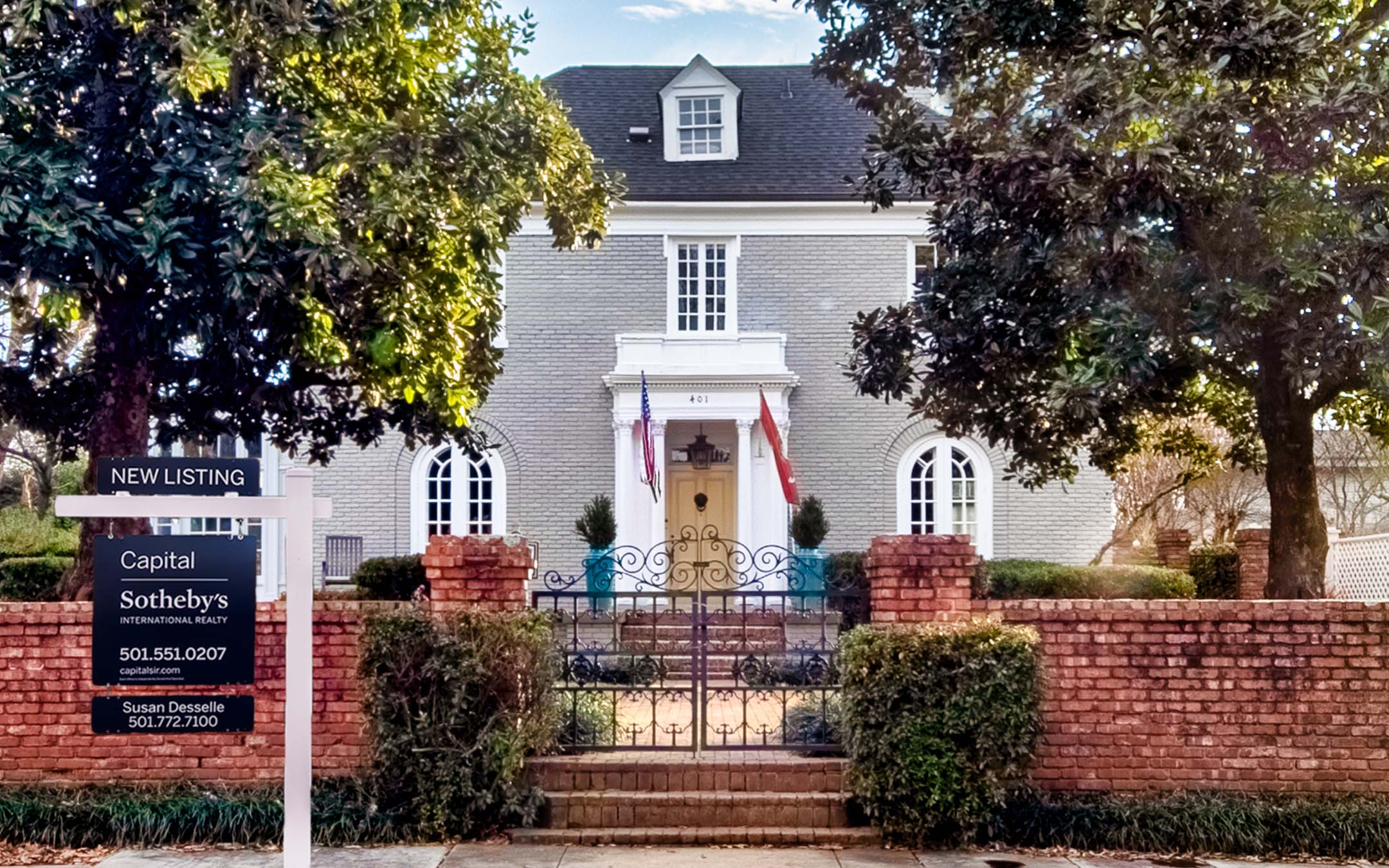NAR, Zillow predict robust housing boom to continue ‘across the board’ in 2021
January 4-10, 2021
By Wesley Brown
Although the nation’s broader economy has struggled to remain viable amid the COVID-19 pandemic, the nation’s housing market has stood out as the shining star in an otherwise gloomy economic landscape and is expected to continue rising in 2021.
In recent year-end reports by the National Association of Realtors and online real estate analytics giant, Zillow Group Inc., top economists noted that the nation’s housing market showed incredible strength in 2020, a trend that will continue unabated in the New Year.
Seattle-based Zillow forecasted that housing would continue to grow and is expected to surge in the cities as economies reopen as COVID-19 vaccines arrived in all 50 states. In its 2021 outlook, Zillow said annual home sales growth will be the highest in nearly 40 years as life and financial certainty brings more sellers into the market to meet the heavy demand and technology allows for faster connections with interested buyers.
Also, the Silicon Valley real estate analytics firm predicts home prices, mortgage rates and rents will rise, bringing affordability challenges that must be faced. In a report issued on Dec. 1, Zillow said low rates of household formation since the Great Recession of 2009 caused 5.7 million “missing” households. These missing households represent people who historically would have moved into their own home but have been unable or unwilling to do so and should keep housing demand high for many years to come as the market catches up.
“The housing crash set back millions of Americans on the path to having their own place to call home, whether they owned or rented it,” said Jeff Tucker, Zillow’s senior economist. “Between a wave of foreclosures, rising rents, and underbuilding of new homes, the housing market became much harder to crack into from 2006 to 2017. The last two years showed that when the economy is firing on all cylinders and most Americans have access to decent jobs, more of them will be able to find a home of their own. The sooner we can put the pandemic and 2020 recession behind us, the sooner access to housing can resume its expansion.”
The mid-2000s financial collapse began a domino effect that caused roughly $6 trillion in real estate equity vanished during the housing crash, impacting the ability of many families to pass down wealth to their children, Zillow noted. Young people who finished school around the late 2000s faced a soft job market, which can have long-lasting effects on a person’s finances and their ability to start a new household. Previous Zillow research has shown it takes about six years for homeownership rates of those who graduated college during a recession to catch up with those who graduated during better economic times.
Zillow’s analysis also highlighted that Americans of every age group and ethnicity are forming households at lower rates than before the Great Recession, meaning they are either living with parents into adulthood or doubling up with roommates instead of buying or renting a home. Lower rates across the board may indicate the market is struggling to provide enough affordable homes overall, not necessarily that a shift in preferences among a particular group is causing the decline.
If rates had remained at pre-Great Recession levels, there would be 5.7 million more U.S. households today, the report states. Whether or not household formation rates begin to recover in the coming years, the missing households from the past 15 years and the large Millennial generation aging into peak homebuying age should keep housing demand high for the foreseeable future.
While demand for urban housing largely kept pace with the suburbs in 2020, rent prices in urban areas softened compared to their suburban counterparts in the spring and summer as a shift in housing needs and the spike in service-sector unemployment left their mark. While it is not quite right to call it a comeback, Zillow said it expects demand for city living to surge in 2021.
Also, some of the nearly 3 million adults who moved in with parents or grandparents in the spring have already started to move back out while taking advantage of an increase in rent concessions. With COVID-19 vaccine distribution underway, Zillow expects many of those who may have left cities temporarily during the pandemic are likely to return as local economies begin to open, and a new class of young adults will be drawn to cities as they finish school and enter the job market. Urban rental demand is likely to be boosted by the relatively soft price growth this year, easing affordability challenges, at least temporarily.
Zillow said it expects a perfect storm of market conditions to create the hottest house shopping spring season in recent memory, with sales happening quickly and often above list price as local economies and schools should be in the process of opening back up as COVID-19 vaccine distribution will be well underway.
The West Coast online real estate operator also forecasts many home buyers will also have more certainty about whether their jobs will be performed remotely in the long term, adding buyers to the market who had been waiting for that to be settled. Add in expectations for mortgage rates to rise later in the year, and we could see a buyer frenzy as they look to lock in rates as low as possible.
“2020 has been a remarkably strong year for the housing market, with sales on pace to grow 6% from 2019 despite essentially pressing ‘pause’ for a few weeks in the heart of the spring shopping season,” said the West Coast real estate data giant. “Zillow expects that mark will be shattered next year, forecasting 21.9% annual growth for a total of 6.9 million homes sold. That would be the biggest annual sales growth since 1983.”
NAR economists predict housing prices to climb 8% in 2021
On Dec. 10, NAR Chief Economist Lawrence Yun unveiled the consensus forecast for the U.S. housing market at the nation’s largest trade group’s annual Real Estate Forecast Summit. In 2020, home sales will reach 5.52 million, the highest annual mark since 2006, with the median home price setting a record high of $293,000, according to NAR.
In its survey of more than 20 top U.S. economic and housing experts, NAR said Americans should expect the post-pandemic economic rebound, improving job conditions and stable interest rates to continue in 2021. In its forecast, NAR’s panel of economic experts predicted real annual Gross Domestic Product expansion of 3.5% and an annual unemployment rate of 6.2% in 2021.
Housing prices are expected to climb 8.0% next year and 5.5% in 2022, with 30-year fixed mortgage rates of 3.0% and 3.25% for 2021 and 2022, respectively. When asked if the Federal Open Market Committee will change the federal funds rate in 2021, 90% of the experts surveyed said they expect no change in the current rate of 0%. For 2022, the experts predict a rate increase of 0.25%.
“It is an understatement to say the year 2020 has been filled with challenges and full of surprises,” said Yun. “Yet, one astonishing development has been the hot housing market as consumers eyed record-low mortgage rates and reconsidered what a home should be in a new economy with flexible work-from-home schedules.”
NAR also identified the top 10 metro areas by considering a variety of indicators that it views to be influential to a metro area’s recovery and growth prospects in a post-pandemic environment over the next two years, including: unemployment rate; net domestic migration, including movers from expensive West Coast areas; share of workers in retail trade, leisure and hospitality industries; mobility to retail and leisure places; and the fraction of the workforce working from home, among others.
“As we look towards 2021 and beyond, expect these 10 markets to perform strongly with potential buyers finding conditions particularly favorable to purchase a home,” said NAR President Charlie Oppler, a real estate executive from Franklin Lakes, N.J., and the CEO of Prominent Properties Sotheby’s International Realty. “Overall, residential real estate will continue to be an important driver of our nation’s economic recovery and the activity in these markets will help lead the way.”
Renters get relief too
In addition to the hot housing market, the new $908 billion stimulus package approved by Congress and signed into law by President Trump last week provides $25 billion in emergency assistance to struggling renters. Modeled after the CARES Act’s Coronavirus Relief Fund, $800 million will set aside for tribal designated housing entities, and $400 million divided by all 50 states, U.S. territories, and the District of Columbia. Metropolitan areas with populations greater than 200,000 will be able to apply directly to Treasury for funds.
Further, the new rules will allow grantee organizations to use the funds to provide direct financial assistance or housing stability services to eligible households. No less than 90% of funds will go to immediate financial assistance, including rent, rental arrears, utilities, home energy costs, costs, arrears, and other housing expenses. For families in distress, eligible households may receive up to 12 months of assistance, plus an additional three months if necessary. The new act also extends the eviction moratorium issued by the Centers for Disease Control and Prevention (CDC) for one extra month through Jan. 31, 2021.
In conjunction with the federal aid for renters, mortgage servicer Fannie Mae said it will continue to assist renters in multifamily units and support Fannie Mae-financed multifamily property owners experiencing difficulties and financial uncertainty by extending its multifamily COVID-19 forbearance program through March 31, 2021. The program, which requires landlords to suspend all evictions for renters unable to pay rent during the forbearance period, was formerly set to expire on Dec. 31, 2020.
For any Fannie Mae-financed multifamily properties with a new or modified forbearance plan as the result of a financial hardship due to the COVID-19 national emergency, the property owner must inform tenants in writing about tenant protections available during the property owner’s forbearance and repayment periods. In addition, the borrower is required to provide tenant protections, including allowing the tenant flexibility to repay back rent over time and not in a lump sum; forgoing late fees or penalties for non-payment of rent; and giving renters at least a 30-day notice to vacate.
“As the COVID-19 pandemic continues to affect communities across the United States, Fannie Mae is proud to extend forbearance options to protect multifamily tenants and assist property owners financially impacted by COVID-19,” said Michele Evans, executive V.P. and head of multifamily housing at Fannie Mae. “The forbearance extension will continue to safeguard renters by suspending all evictions for nonpayment of rent and allow for flexible repayments, which will help keep people in their apartments.”
PHOTO CAPTIONS: (Photos by Chase Ertzberger)
Forecast 2021: Housing Market Set for Record Year –
The Old Methodist Parsonage is one of the great Dames of the Governor’s Mansion Historic District, located at 401 W 18th Street in downtown Little Rock. It was originally designed in 1927 by the prominent architect, John Parks Almand, who also designed the historic Little Rock Central High School. The home one of the great Arkansas developers of the era, George Burden, who also built the Arlington Hotel in Hot Springs. The two-story home, located directly west of the Governor’s Mansion, was originally the parsonage to the First Methodist Episcopal Church and remained so until 1966 when it first became a private residence.
The remodeled mansion has been on the Quapaw Quarter’s historic homes tour four times since 1975. It has recently undergone extensive renovations as a prelude to the forecasted strong housing market in 2021. The historic home is now being offered for sale by Capital Sotheby’s International Realty for $650,000. For more information or to schedule your private tour, contact Susan Desselle. 501.772.7100. Susan.Desselle@CapitalSIR.com.






